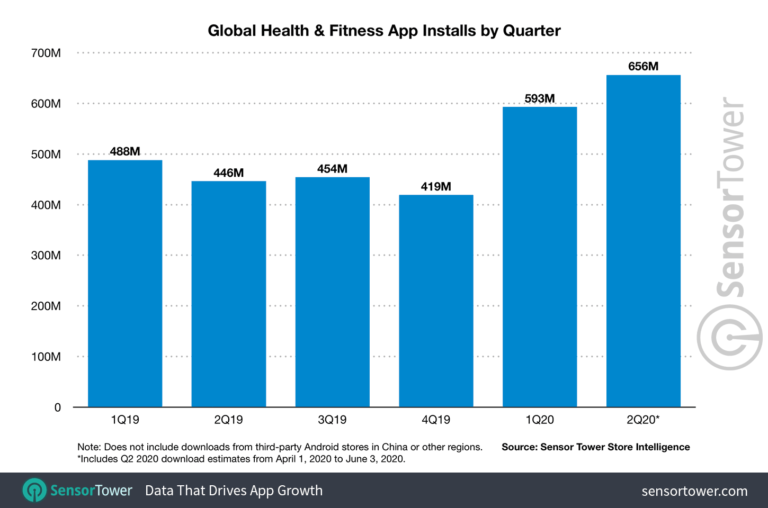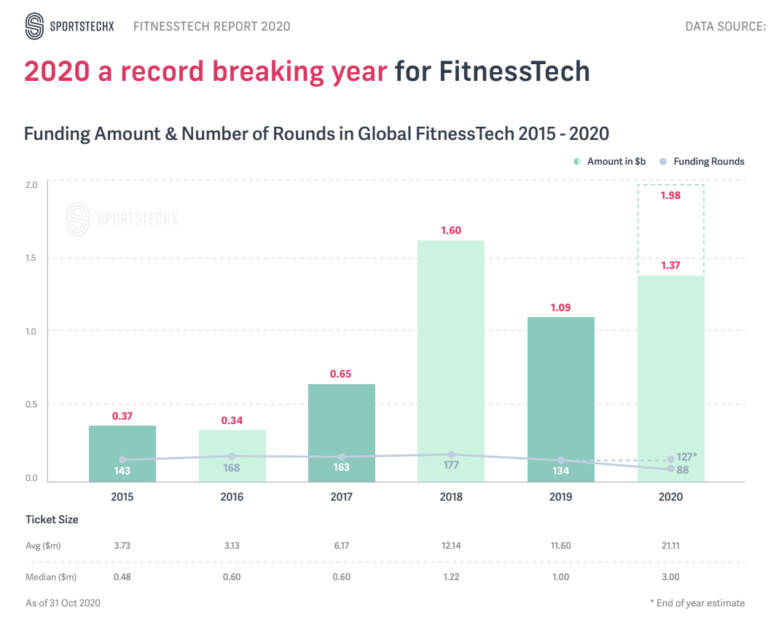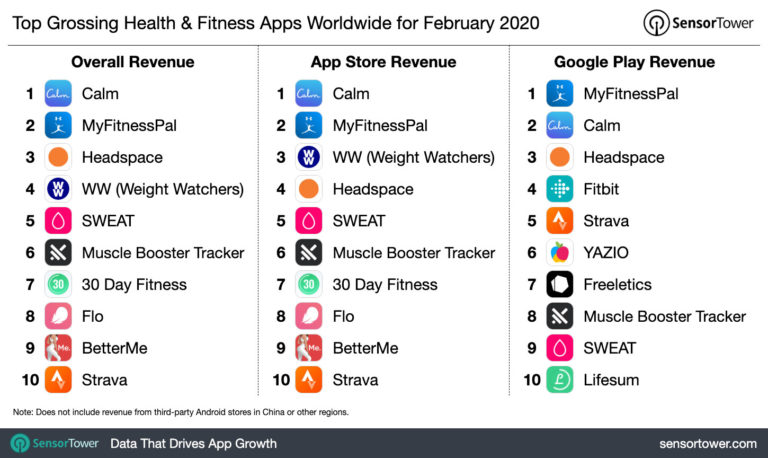The spread of the COVID-19 pandemic and nationwide lockdowns has led to a rise in demand for virtual fitness services.
According to an article published in the World Economic Forum in September 2020, global downloads of fitness and health apps increased by 46% and the overall number of fitness apps users increased by 24%.

WHAT ARE THE LEADING CATEGORIES OF HEALTH & WELLNESS AND FITNESS APPS?
Fitness apps fall into one of three general categories:
- Exercise and Weight loss – a dominating category with 54.6% market share
- Diet & Nutrition
- Activity tracking
Interesting fact: 52% of revenue came through iOS and in Q1 of 2020 the number of fitness app users reached 1.5 billion, according to Apple Inc.
With regards to devices, smartphones are the leading revenue source, generating 67% of business. This is followed by wearable devices, which generate more than 25% of the total revenue.
Fitness apps are introduced by key figures in the sports industry: gyms and studios, sportswear, nutrition centres and individual tech entrepreneurs, to fulfil market demand. For example, Nike introduced Nike Training Club and Nike Run, while Underarmour and Adidas also introduced their own training and tracking apps.
On top of that, a lot of venture capitalist (VC) firms have invested in FitnessTech. For instance, Fittr raised $2m in Q2 2020 and Balterdon Capital, a UK based VC, invested $2.5m in 8fit in July 2020.
The fitness market is expected to grow to $3.9 billion in 2021 by and by 2028 it is expected to reach $15.5 billion.

WHAT ARE THE MOST TRENDY IN FITNESS APPS FEATURES?

- Platform adopts a lot of artificial intelligence (machine learning) to create automatically personalized programs and plans, considering various metrics, such as height, weight, targets, allergies, lifestyle, etc.
- Geolocation to track and build walking, running, and cycling routes.
- Push notifications for reminders, e.g., to stay hydrated, eat a meal or for an upcoming workout.
- Gamification to stimulate both app usage and physical activity: accept a challenge, unlock a milestone, earn loyalty points to redeem at Partnering business, like online stores or health food businesses.
- Multi-device synchronization: connecting wearable devices and smartphones, using IoT.
- Activity tracking: weight loss, stress level, number of steps, distance, macro intake, sleep tracking and many others, reflecting in beautiful graphs that show historical changes.
Do you have a fitness app you’re looking to develop? Or, could your company benefit from its own app – acting as an additional sales channel for your business?
If so, get in touch with us and we’ll help you develop an high performing application, on time and within budget.
